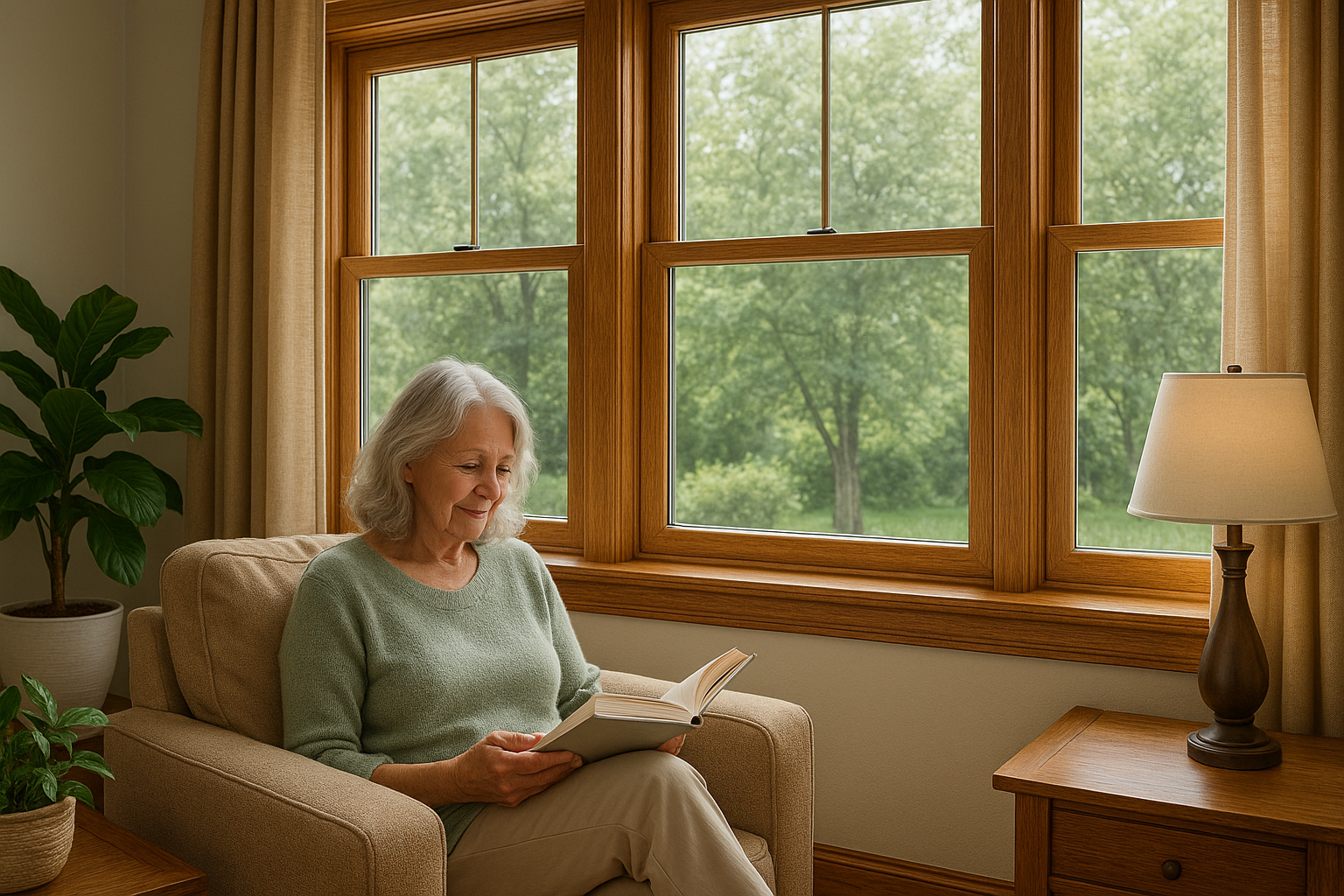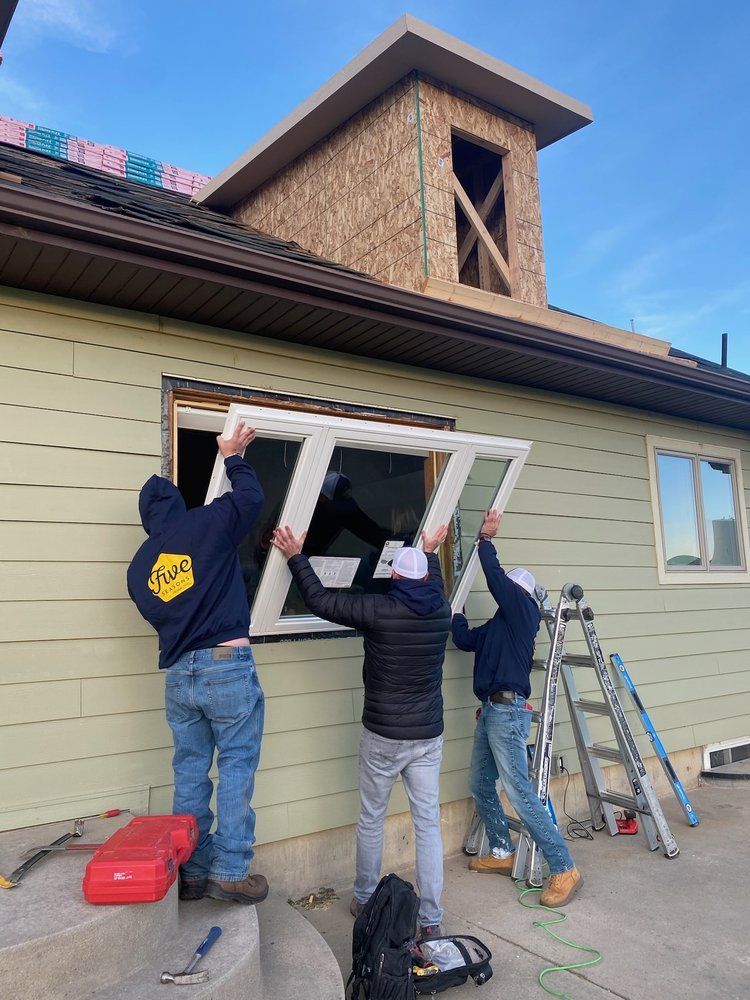Vinyl vs fiberglass window lifespan benefits reveal a dramatic difference in longevity: vinyl windows typically last 15-20 years before requiring replacement, while fiberglass windows deliver 30-40 years of reliable service, effectively doubling the replacement cycle and providing superior long-term value despite higher initial investment costs.
According to the Window and Door Manufacturers Association, fiberglass windows maintain their structural integrity and energy performance for decades longer than vinyl alternatives, with field studies showing 85% of quality fiberglass installations still performing at original specifications after 25 years, compared to only 45% of vinyl windows requiring repairs or replacement within the same timeframe.
Understanding these lifespan differences helps homeowners make informed decisions that balance upfront costs with long-term value. While vinyl windows offer attractive initial pricing, the superior durability of fiberglass often provides better financial returns through extended service life, reduced maintenance, and consistent energy performance over decades.
Documented Service Life Performance
Real-World Longevity Data
Field research from major window manufacturers shows vinyl windows experiencing significant performance degradation after 12-15 years in most climates, with complete replacement typically needed by year 20. Common failure points include seal deterioration, frame warping, and hardware malfunction that compromise energy efficiency and operation.
Fiberglass windows demonstrate superior longevity with documented cases of 35-40 year service life while maintaining original performance specifications. The dimensional stability of fiberglass prevents the thermal expansion issues that plague vinyl, resulting in better seal retention and consistent energy performance throughout the window's lifespan.
Climate Impact on Material Durability
Extreme temperature variations accelerate vinyl degradation through repeated expansion and contraction cycles that stress seals and joints. UV exposure compounds these issues by breaking down polymer chains, leading to brittleness and color changes that affect both function and appearance within 10-15 years.
Fiberglass construction resists UV degradation and maintains dimensional stability across temperature ranges from -40°F to 140°F. This stability prevents the seal failures and air leaks that commonly develop in vinyl windows, ensuring consistent thermal performance and weather resistance throughout extended service periods.

Material Science and Durability Factors
Structural Integrity Differences
Vinyl window frames rely on welded joints and mechanical fasteners that can fail over time as the material becomes brittle from UV exposure and thermal cycling. The polymer structure of vinyl becomes increasingly fragile, leading to frame cracking and hardware mounting point failures that compromise window operation.
Fiberglass combines glass fiber reinforcement with polymer resins, creating a composite material with superior strength-to-weight ratio and resistance to environmental stresses. This engineered construction maintains structural integrity for decades, preventing the gradual degradation that characterizes vinyl window performance over time.
Thermal Expansion and Performance Retention
The high coefficient of thermal expansion in vinyl causes significant dimensional changes that stress glazing seals and weather stripping. These repeated stress cycles gradually compromise the air and water tightness that defines energy-efficient window performance, leading to drafts and moisture infiltration.
Fiberglass expands at nearly the same rate as glass, minimizing stress on seals and maintaining consistent performance. This thermal compatibility prevents the progressive air leakage that reduces energy efficiency in vinyl windows, ensuring stable utility savings throughout the window's extended service life.
Financial Impact Analysis
Replacement Cycle Economics
Homeowners choosing vinyl windows typically face complete replacement costs twice during a 40-year period, doubling the initial investment plus installation expenses. When factoring in inflation and potential home disruption, this replacement cycle significantly increases total ownership costs compared to single fiberglass installation.
Fiberglass windows eliminate the mid-life replacement expense through extended service life that often exceeds 30 years. This longevity provides substantial financial advantage by avoiding the secondary investment, installation disruption, and disposal costs associated with premature window replacement.
Energy Performance Degradation Costs
Vinyl windows experience measurable energy performance decline after 10-12 years as seals deteriorate and frames lose dimensional stability. This degradation increases heating and cooling costs by 15-25% compared to original performance, adding substantial expense over the window's shortened lifespan.
Fiberglass windows maintain consistent energy performance throughout their extended service life, preserving utility savings for decades. The stable thermal performance prevents the efficiency losses that make aging vinyl windows increasingly expensive to operate as energy costs continue rising.
Resale Value Considerations and Market Impact
Home Appraisal and Buyer Preferences
Real estate appraisers consistently value homes with newer windows higher than those with aging installations, with the age and condition of windows directly impacting property valuations. Homes with 15-20 year old vinyl windows often face buyer resistance or price negotiations, while properties with newer fiberglass installations command premium pricing.
Market studies show that buyers prefer homes where major components like windows won't require immediate replacement, making the extended lifespan of fiberglass windows a significant selling advantage. Properties with aging vinyl windows frequently require pre-sale replacement or substantial price reductions to compensate for anticipated replacement costs.
Investment Recovery and Market Timing
Fiberglass windows maintain their value contribution throughout their 30-40 year lifespan, providing consistent appraisal benefits and buyer appeal. This sustained value helps homeowners recover their initial investment through higher sale prices regardless of when they decide to sell.
Vinyl windows lose value appeal after 12-15 years as buyers recognize approaching replacement needs, potentially reducing home marketability or requiring seller concessions. The timing of home sale relative to vinyl window age significantly impacts investment recovery and negotiation position with potential buyers.
Maintenance Requirements and Lifecycle Costs
Ongoing Care and Repair Needs
Vinyl windows require increasing maintenance attention after 10 years, including weatherstripping replacement, hardware adjustments, and potential frame repairs as materials age and become brittle. These maintenance costs accumulate significantly over the window's shortened lifespan.
Fiberglass windows maintain operation with minimal maintenance requirements, typically needing only periodic cleaning and occasional hardware lubrication throughout their extended service life. This reduced maintenance burden provides both cost savings and convenience over decades of ownership.
Long-Term Performance Reliability
The gradual degradation of vinyl materials creates unpredictable maintenance and repair costs as windows age, with potential for sudden failures during extreme weather events. This uncertainty complicates budgeting and may require emergency replacements at inconvenient times.
Fiberglass construction provides predictable long-term performance with gradual, manageable maintenance needs that can be planned and budgeted effectively. The material stability eliminates surprise failures and provides peace of mind through consistent, reliable operation.
Climate-Specific Longevity Considerations
Regional Performance Variations
In high-UV environments like Colorado's mountain regions, vinyl windows may show significant degradation within 8-12 years through color fading, surface chalking, and material brittleness. These conditions accelerate the normal aging process and may require earlier replacement than standard 15-20 year expectations.
Fiberglass windows include UV stabilizers and maintain performance in extreme solar conditions without significant degradation. The material composition resists fading and maintains structural integrity even in high-altitude, high-UV environments that challenge other window materials.
Extreme Temperature Performance
Freeze-thaw cycles common in northern climates stress vinyl window frames and seals, potentially reducing service life to 12-15 years in areas with severe temperature variations. The repeated expansion and contraction accelerates seal failures and frame distortion.
Fiberglass dimensional stability prevents temperature-related stress and maintains consistent performance through extreme seasonal variations. This reliability ensures the full 30-40 year service life even in challenging climates with significant temperature swings.
For homeowners evaluating the complete financial picture of material choice, understanding both immediate costs and long-term performance helps inform the best decision. For comprehensive information about upfront pricing differences and overall value comparison, explore our detailed guide: 🔗Fiberglass vs Vinyl Windows Benefits: Which Material Saves More Money?

People Also Ask About Vinyl vs Fiberglass Window Lifespan Benefits
1. Do fiberglass windows really last twice as long as vinyl windows?
Yes, documented field studies consistently show fiberglass windows lasting 30-40 years compared to 15-20 years for vinyl windows in similar conditions. This difference reflects the superior material properties of fiberglass composite construction versus vinyl polymer materials.
Manufacturing data from leading window companies confirms this longevity advantage, with warranty periods often reflecting these differences - fiberglass windows typically carry 20-30 year warranties while vinyl windows usually offer 10-15 year coverage. These warranty terms reflect manufacturer confidence in long-term performance.
Real estate studies also support these lifespan differences, with appraisers noting that fiberglass windows maintain value longer and require less frequent replacement during typical homeownership periods, making them more attractive to quality-conscious buyers.
2. What causes vinyl windows to fail after 15-20 years?
Vinyl window failure typically results from UV degradation, thermal cycling stress, and seal deterioration that occurs as the polymer material becomes brittle over time. The combination of sun exposure and temperature changes gradually breaks down the molecular structure of vinyl.
Common failure modes include warped frames that prevent proper operation, failed glazing seals that allow air and moisture infiltration, and hardware mounting points that crack under stress. These issues compound over time, eventually requiring complete window replacement.
The thermal expansion coefficient of vinyl creates repeated stress on seals and joints that gradually compromise air and water tightness. This progressive degradation reduces energy efficiency and comfort, making replacement necessary even when frames appear structurally sound.
3. How much money do you save with longer-lasting fiberglass windows?
The extended lifespan of fiberglass windows typically saves $3,000-8,000 per window over 40 years through avoided replacement costs, reduced maintenance, and consistent energy performance. These savings often exceed the initial premium cost within 15-20 years.
For a typical home with 15 windows, choosing fiberglass over vinyl can save $45,000-120,000 over four decades when factoring in replacement costs, installation expenses, and energy performance maintenance. These substantial savings justify the higher initial investment for most homeowners.
Energy performance maintenance provides additional savings as fiberglass windows preserve their thermal efficiency throughout their service life, while aging vinyl windows become increasingly expensive to heat and cool as seals deteriorate and frames lose dimensional stability.
4. Can vinyl windows last longer than 20 years in ideal conditions?
While premium vinyl windows in mild climates with minimal UV exposure might reach 25 years, most installations show significant performance degradation by year 20. Even in ideal conditions, the inherent material properties of vinyl limit maximum practical service life.
The polymer chemistry of vinyl undergoes inevitable degradation from UV exposure, oxygen, and thermal cycling that cannot be completely prevented even with stabilizers and protective coatings. This molecular-level degradation eventually compromises structural integrity and performance.
Fiberglass maintains superior performance even in challenging conditions due to its glass fiber reinforcement and engineered polymer matrix that resists environmental stresses. This fundamental material advantage provides consistent longevity regardless of installation climate.
5. What maintenance extends vinyl window lifespan versus fiberglass?
Vinyl windows require frequent weatherstripping replacement, regular cleaning with specific non-abrasive products, and careful hardware maintenance to maximize their 15-20 year lifespan. Even with excellent care, the material degradation process continues and eventually requires replacement.
Fiberglass windows need only periodic cleaning, occasional hardware lubrication, and standard weatherstripping maintenance to achieve their full 30-40 year service life. The stable material properties reduce maintenance requirements while providing superior longevity.
The key difference lies in material stability - vinyl maintenance attempts to slow inevitable degradation while fiberglass maintenance preserves materials that naturally resist environmental stresses. This fundamental advantage makes fiberglass easier and less expensive to maintain over time.
Our Take
At Five Seasons Windows & Doors, our three decades of installation experience consistently demonstrates the dramatic lifespan differences between vinyl and fiberglass windows. We regularly replace 15-20 year old vinyl windows that show significant performance degradation, while fiberglass installations from the 1990s continue providing excellent service with minimal maintenance requirements.
Colorado's challenging climate amplifies these material differences, with intense UV exposure and dramatic temperature swings accelerating vinyl degradation while fiberglass windows maintain consistent performance. Our clients who chose fiberglass consistently report better long-term satisfaction and lower total ownership costs despite higher initial investment.
We believe honest disclosure of these lifespan differences helps homeowners make informed decisions that align with their long-term plans and financial goals. While vinyl windows serve budget-conscious needs, fiberglass provides superior value for homeowners prioritizing longevity, consistency, and reduced replacement frequency over decades of ownership.
Final Takeaway
Vinyl vs fiberglass window lifespan benefits analysis reveals that material choice fundamentally determines replacement frequency, with vinyl requiring replacement every 15-20 years while fiberglass delivers 30-40 years of reliable service. This longevity difference provides substantial financial advantages through avoided replacement costs and consistent energy performance over decades.
The documented performance data supports fiberglass as the superior long-term investment for homeowners planning extended ownership, while vinyl serves immediate budget needs at the cost of more frequent replacement cycles. Understanding these real-world lifespan differences enables informed decision-making that balances upfront costs with long-term value.
Climate considerations amplify these material differences, making fiberglass particularly advantageous in challenging environments where vinyl degradation accelerates. Professional guidance helps evaluate specific situations and determine which material provides optimal value based on individual circumstances, climate conditions, and ownership timelines.
Get Started Today
Five Seasons Windows & Doors is Colorado’s top-rated local window company with 230+ 5-star reviews. We offer expert advice, no-pressure quotes, and flexible project options — including phased installs. Schedule your consult today.



